How to Create Portable Windows 10 to USB Drive
You can create a portable Windows 10 on a USB drive using either the Qiling backup and recovery software or by downloading the ISO files directly to your USB.
What Is A Windows 10/8/7 Portable Drive
A portable Windows USB drive is a pen drive that has been installed with a Windows system, using Windows ISO and system files, allowing users to boot their computers or other PCs directly from the USB drive.
A portable Windows USB drive offers several advantages, including the ability to boot up a Windows operating system on any computer, access files and programs from anywhere, and easily transfer data between devices.
| Take Your System Anywhere | Prevent System Error |
|---|---|
| If your computer or laptop suddenly crashes due to system failure or internal error, a portable Windows USB drive can come to your rescue. This USB drive allows you to reboot your PC from it, enabling you to continue working and troubleshoot the corrupted Windows system. | Windows portable USB drive allows you to take your Windows system anywhere and directly boot from it on other computers, saving time and energy. |
Tip 1. How to Make Portable Windows 10 on USB Drive (with Software)
To create a portable Windows USB drive, you can use the Windows 10 Media Creation Tool to create a bootable USB drive that can be used to install Windows 10 on a PC. You can also use a third-party tool like Rufus or PowerISO to create a bootable USB drive. To clone a Windows system to a USB drive, you can use a tool like Acronis True Image or EaseUS Todo Backup, which can create a backup of your Windows system and restore it to a USB drive. Alternatively, you can use the built-in Windows 10 feature called "Create a bootable USB drive" to clone your Windows system to a USB drive.
Fortunately, the powerful Windows backup recovery software - Qiling Backup - can help you effectively clone and install Windows 10, 8, or 7, etc. system to a USB drive with simple clicks, making it easy for ordinary users to do the job. You can download this software and learn how to make your Windows system bootable from a tiny USB drive now.
1 - Preparations
- An external hard drive
- The external hard drive cable
- Qiling Backup
2 - Notes
Check the unallocated space (enough unallocated space on the left)
Check the partition style (the same with the system drive)
3 - Steps
Here is a detailed step-To create a portable USB system boot drive of Windows 10, start by downloading the Windows 10 Media Creation Tool from Microsoft's official website. Follow the prompts to create a bootable USB drive, selecting the language, edition, and architecture of Windows 10 to match your system.
Step 1. Connect a USB drive to your PC and run Qiling Backup, clicking "System clone" feature.
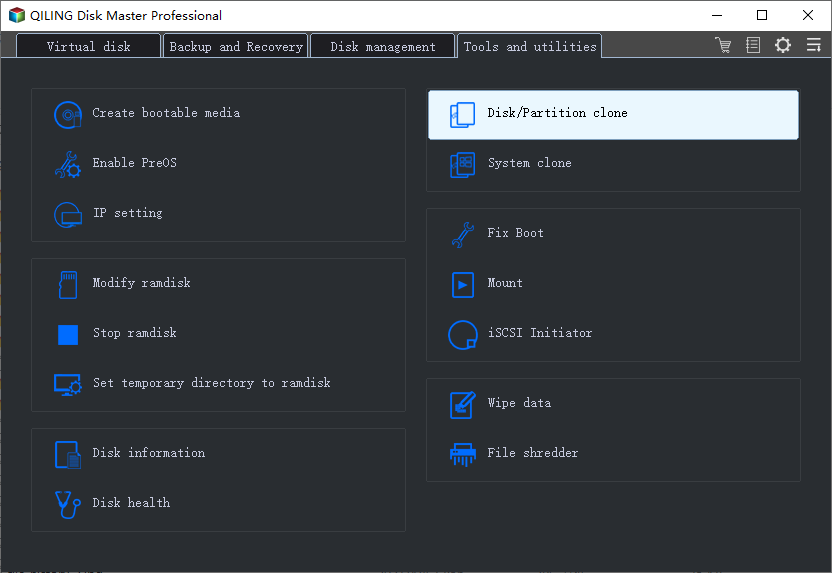
The system drive and boot partition must be smaller than the USB drive for Qiling Backup's System Clone feature to work. If the USB drive is not large enough, the feature will notify you of this.
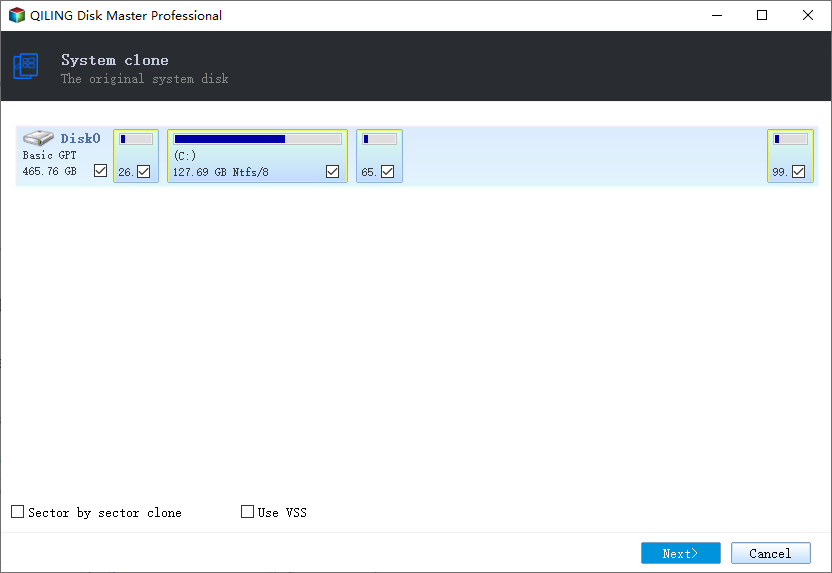
Step 2. Select the destination disk - the USB drive to clone system drive (system and boot partition) to.
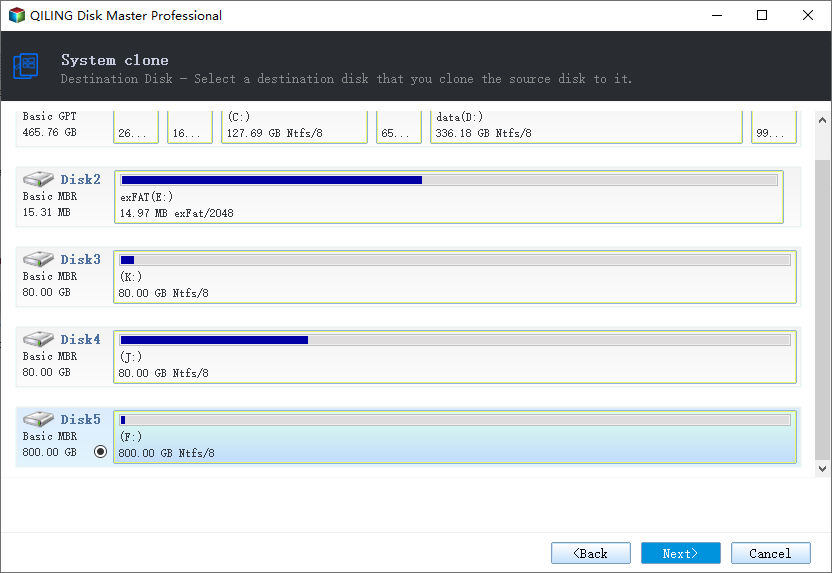
If your USB drive storage space is big enough, you will be able to store all your files and data without any issues. However, if it's not big enough, you will encounter storage space problems, such as not being able to save files or run programs due to insufficient space. To check, you can simply go to the USB drive's properties and see how much storage space is available.
Step 3. Preview the disk layout and then click Proceed to execute the system cloning process.
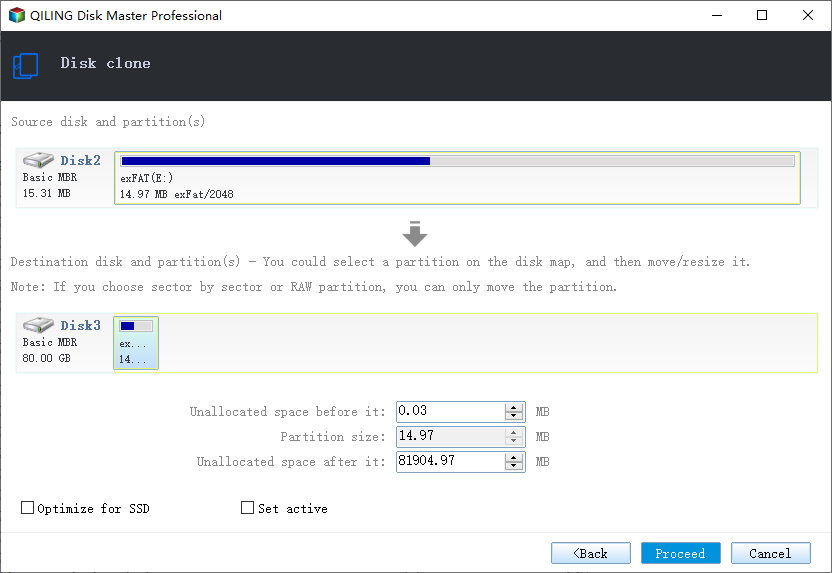
Step 4. Wait till the system clone process complete.
After the system clone process is complete, you have successfully created a portable Windows USB for Windows 10.
Tip 2. How to Make a Windows 10 To Go USB Drive (with ISO File)
If you don't want to use the software, you can download Windows 10 ISO file to make a portable Windows USB, which involves creating Windows 10 installation media and burning the ISO to DVD.
1 - Preparations
- A copy of Rufus (https://rufus.ie/) or WinToUSB
- A USB 3.0 flash drive with a minimum storage capacity of 32 GB
- A Windows ISO file
- A valid license for your portable copy of Windows
2 - Steps
Step 1. You need to download and run the media creation tool.
To create Windows 10 installation media, use a blank USB or blank DVD to avoid deleting any content.
Step 2. On the "What do you want to do?" interface, select "Create installation media for another PC", and then select "Next".
Step 3. Choose the language, edition, and architecture (64-bit or 32-bit) for Windows 10. Select media tool you want to use:
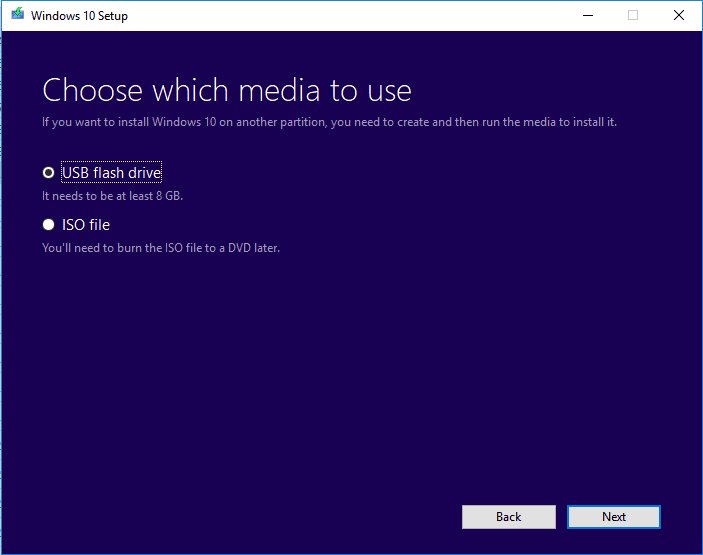
To Burn ISO to USB in Windows 10:
Download the latest version of Rufus, launch it, connect a USB to your computer, and use it to burn an ISO file to the USB.
Step 1. To burn an ISO file to a USB device, select the USB device from the list of available devices, then choose "Disk or ISO image (Please select)" from the Boot selection dropdown menu and select the ISO file from your computer.
Step 2. To ensure you can boot from the USB on both UEFI and BIOS computers, select "MBR" under the Partition scheme when creating the bootable USB. This will allow the USB to be compatible with both types of systems.
Step 3. Leave the other options unchanged and click "Start" to begin burning the Windows 10 ISO file to the USB drive.
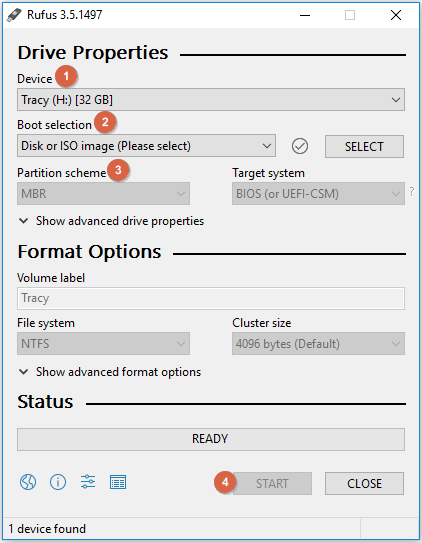
How to Run Windows 10 from a USB Drive
To run Windows 10 from a USB drive on a different computer, insert the USB drive into the new PC and follow the steps to boot from the USB drive, which typically involves entering the BIOS settings, selecting the USB drive as the boot device, and saving the changes. Once booted, you can launch Windows 10 from the USB drive and use it as a temporary operating system.
Step 1. Press the appropriate key (F2, F12, Delete, or Esc) to launch your Boot menu and choose boot from the USB drive.
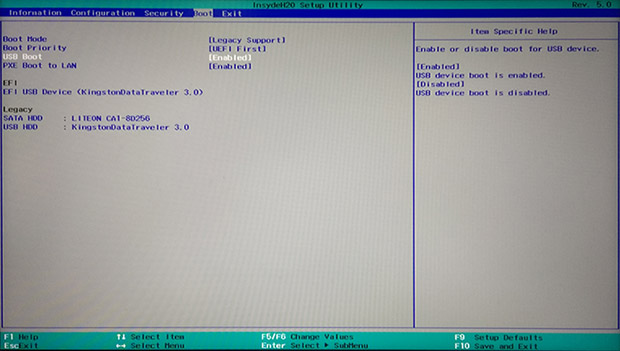
Step 2. When running Windows 10 from a USB drive for the first time, you'll go through the standard Windows setup process, followed by activating Windows 10 using your license code.
Conclusion
To create a portable USB drive, you can either use a USB drive with a built-in battery or a USB drive with a battery pack. Both solutions allow you to have a power source for your USB drive, making it portable. Regardless of the method you choose, it's essential to plan ahead and ensure that the necessary hardware is available wherever you're going. This will guarantee that you have a reliable and functional portable USB drive.
Related Articles
- Download System Clone Software to Clone OS in 2 Procedures
- Clone SSD/HDD Sector by Sector
- Hard Disk Backup in Windows 10/8/7 [Beginners' Guide]
- How to Automatically Backup Files to An External Hard Drive in 3 Ways